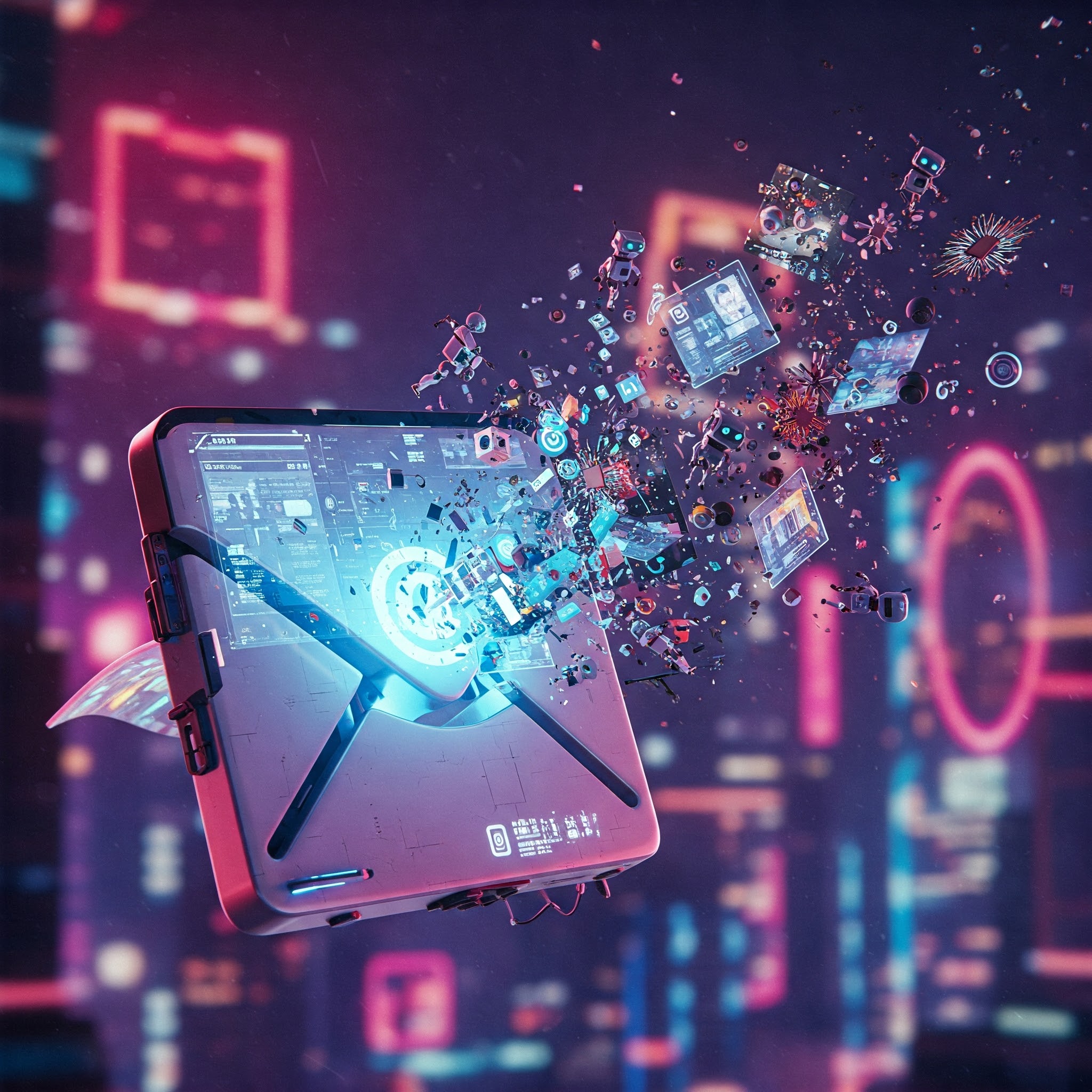AI: Friend or Foe? How Artists are Dodging the Algorithm Apocalypse (For Now)
The art world. Always a delightful mix of pretension, questionable funding, and the occasional actual talent. Now, add AI into the mix, and you’ve got a Molotov cocktail of existential dread and potentially interesting wallpaper. Is it the death of art as we know it? Or just another overpriced tool for the discerning creative?
Image Generators: The New Muse (That Doesn’t Demand Espresso)
AI image generators are all the rage. Type in ‘a melancholic pug contemplating existentialism in the style of Rothko’, and boom, instant art (or something resembling it). The promise? Infinite inspiration at your fingertips. The reality? Mostly bizarre, slightly unsettling images of pugs. Still, it’s a starting point. Think of it as a brainstorming partner who never runs out of bad ideas, but occasionally stumbles upon a gem.
Rumors abound of artists using these tools to generate hundreds of variations, then meticulously cherry-picking and refining the results. Is it cheating? Is it collaboration? The debate rages on, fueled by strong coffee and even stronger opinions.
Beating Creative Block: Outsource Your Existential Crisis
Staring at a blank canvas? Let the algorithm do the heavy lifting! AI can churn out endless variations on a theme, offering new perspectives and directions. It’s like having a thousand monkeys with paintbrushes, except these monkeys are powered by algorithms and housed in a server farm (presumably unionized, though that’s unconfirmed).
However, a word of caution: relying too heavily on AI for inspiration can lead to homogenous, soulless art. Remember, the best art often comes from struggle, from wrestling with your inner demons, not from outsourcing them to a silicon-based life form.
Enhancing Your Visuals: Because Filters Are Never Enough
AI can also be used to enhance existing artwork. Think of it as Photoshop on steroids, capable of suggesting color palettes, optimizing lighting, and generally making your art look slightly less amateurish. Programs can apply filters inspired by famous artists. Want to make your cat photo look like a Van Gogh? Now you can! (Whether you should is another question entirely.)
Speeding Up the Process: Because Time is Money (and Art Supplies are Expensive)
Let’s face it: art is time-consuming. But AI can automate repetitive tasks, freeing up artists to focus on the ‘important’ stuff (like arguing about the meaning of their work). Digital artists can use AI for sketching, coloring, and texturing, tasks that once took hours can now be done in minutes. More time for existential dread, less time for tedious labor!
New Mediums: When Art Gets Weird
AI is not just changing how art is made, but what art is. Interactive installations that respond to audience input, AI-generated music, evolving art that changes over time – the possibilities are endless, and often deeply unsettling. Imagine a gallery filled with self-aware sculptures that judge your fashion choices. Actually, don’t imagine that. It’s probably already happening.
The Ethical Quagmire: Who Owns the Algorithm’s Soul?
Here’s where things get thorny. If an AI creates a piece of art, who owns it? The artist who provided the prompt? The programmers who built the AI? The company that owns the server farm? These are questions that lawyers and philosophers will be debating for decades, while artists continue to quietly monetize their AI-generated masterpieces.
And then there’s the question of authenticity. Can a machine truly create ‘art’? Or is it just mimicking patterns and styles? Some argue that AI-generated art lacks the emotional depth and human touch that makes art meaningful. Others argue that it’s simply a new form of expression, and we need to adjust our definitions accordingly. In any case, it is important to think about the human aspects of creativity to maintain the craft of the work
Conclusion: Embrace the Robot Overlords (But Keep Your Paintbrushes Handy)
AI is here to stay, and it’s changing the art world in profound ways. Embrace it, experiment with it, but don’t let it replace your own creativity. Use it as a tool, a collaborator, a source of inspiration, but never forget that art, at its core, is a human endeavor. And if the robots ever do take over, at least we’ll have some interesting art to decorate their dystopian utopia.

